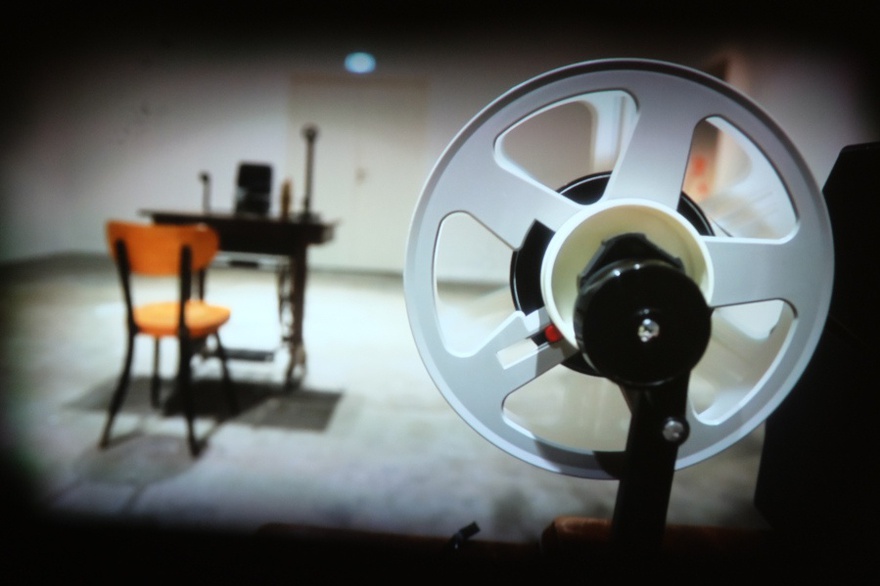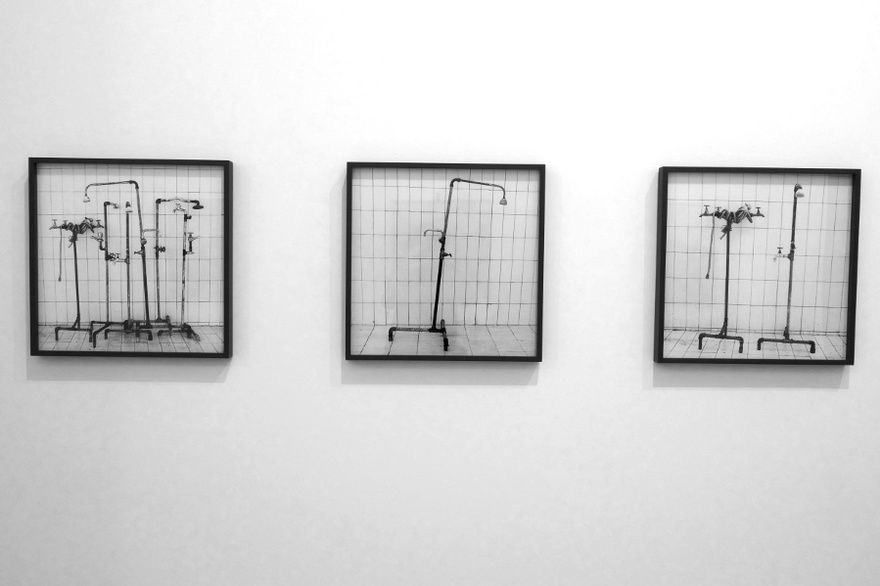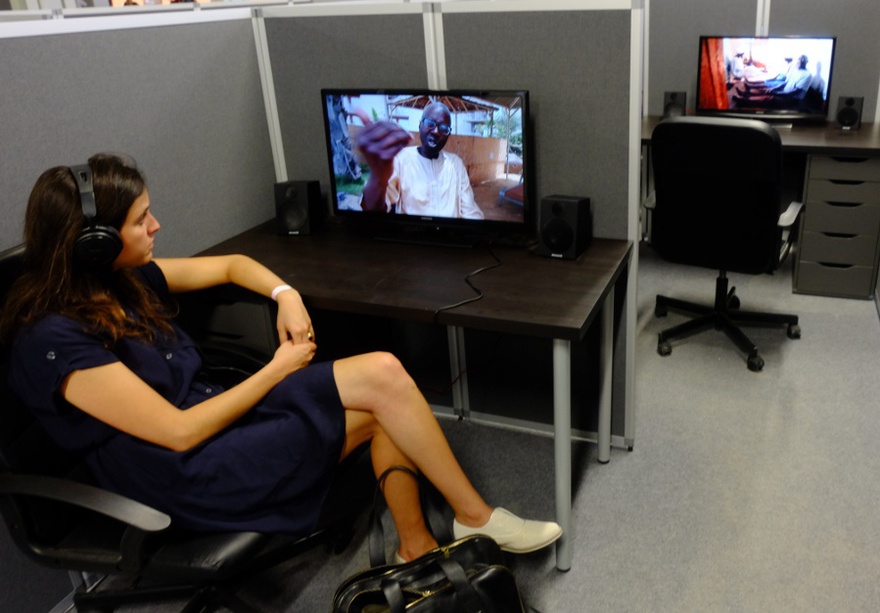Reviews
La Vie Moderne
The 13th Biennale de Lyon
Since its inception in 1991, the Biennale de Lyon has taken a long-term approach to its exhibitions. Sustained investigations of a theme over a span of six years for three consecutive iterations of the Biennale have allowed concepts to be examined through complementary and dissonant perspectives. Thierry Raspail, the artistic director of the Biennale, invites guest curators to 'reflect on themes relevant to art today in the present'. The cycle recently explored the theme of 'transmission' through the vision of curators Hou Hanru, Victoria Noorthoorn, and Gunnar B. Kvaran. The theme for the next three editions is an exploration of the 'modern' and, in particular, what modernity means today. Inaugurating this cycle, which will run until 2019, is Hayward Gallery curator Ralph Rugoff, who responded to the invitation by mixing a number of references together, from Charles Baudelaire's poem The Painter of Modern Life (1863) and Jacques Tati's 1967 movie Playtime, to Raymond Depardon's La Vie Moderne (2008), from which this Biennale takes its name.
Gathering together 60 artists in three fluid and tightly curated spaces – the intimate rooms of the Museum of Contemporary Art; the converted industrial wasteland of La Sucrière (a former sugar warehouse) and the futurist Musée des Confluences – Rugoff has considered the theme of modernity by rejecting it as a master narrative. Instead, he focuses on the fragility of the notion, bearing in mind the multiplicity of cultures, narratives and subjectivities impacting on the perception of both the 'modern' and the 'contemporary'. To this end, artists from 28 countries have been brought together to construct a series of cross-references that explore the relations between history, social engagements, technology and environmental issues. In this, Rugoff contemplates the multiple and parallel counter modernities shaping our world and the implications of such progress. Discarded tyres found on a motorway in Mike Nelson's sculpture A7 (Route du Soleil) (2015), for example, comment on the speed of consumption and the waste production caused as a result. Although not situated in the same exhibition space, these relics converse with the video The Ghost of Modernity Lixiviados (2012) by Miguel Angel Rios, which starts as an aerial journey over a rubbish tip, full of plastic residue, with vultures circling overhead. In another work at La Sucrière, Nguyen Trinh Thi's Landscape Series #1 (2013) – photographs depicting individuals pointing at an unseen menace in the Vietnamese countryside – coexists with George Osodi's landscapes in Oil Rich Niger Delta (2003–2007), a photographic series that demonstrates the environmental damage caused to the Niger Delta's ecosystem due to oil exploration.
But as much as this Biennale takes a global view, it is also firmly rooted in Lyon's context as a former industrial centre and the second biggest French city. The curatorial proposal has been conceived as a bridge between the history of the city and its inhabitants. A few works have been formulated as a response to the invention of cinema in Lyon by the Frères Lumières at the end of the nineteenth century, as well as to the Canut revolts of the silk workers in 1831 and 1834 – landmark uprisings in the history of workers' movements. Those two events were seminal starting points for Ahmet Öğüt's new piece, Workers Taking over the Factory (2015). On the occasion of the 120th anniversary of the first motion picture camera's creation in 1895, he recorded a re-enactment of the Workers Leaving the Lumière Factory in Lyon. He refers to the invention of cinema in relation to labour and wages as we see workers exiting the factory with signs bearing logos from various bankrupted European companies and self-organized workers' movements. His installation comprises three sewing machines, each activating a monitor playing his video. The sewing machines are an additional layer evoking Lyon's former textile industry. Engaging with labour movements, Öğüt brought 'the physical presence of production to the space' thanks to a 'symbolical act and productive collaboration with the Kazova textile corporation in Turkey' resulting in the t-shirts worn by all the guides of the Biennale. The merging of old sewing machines and 8mm films with contemporary issues such as resistance and labour struggles considers the impacts of innovation in social and economic terms. The constant quest for novelty widens the gap between traditional knowledge, skills and technology, weakening cultural heritage in the process, and even accelerating its disappearance.
The interaction between innovation and tradition is also addressed in a recent photographic series titled Plumber Assemblage (2014) by Yto Barrada. Documenting the ingenuity of the plumbers of Tangier's souk, she presents nine photographs of the assemblages they create with pipes, showerheads and taps. These structures are made by the plumbers out of boredom while waiting for clients and, as the original plumbing elements are diverted from their functionality, the resulting constructions almost look like contemporary art sculptures. The assemblages remain in the souk as useless structures but evidence the skills of the craftsmen. Here, Barrada comments on the continuities that emerge between historical artefacts and technologies. Discrepancies are always put forward when it comes to assessing the relations between past, present and future. Yet, Barrada shows that links are stronger than ruptures – the assemblages are epitomes of that porosity. Negotiating heritage and modernity implies constant backwards and forwards movements: in these images, the two are interwoven and end up being written together.
Technology in its contradictory relation to ecology is another prevalent issue addressed in the exhibition. Hicham Berrada reflects on the world's changing environments in an immersive installation for which he won the Biennale's Francophone Artist Award. Titled Mesk-ellil (2015), this sensorial and poetic piece is installed in its own room on the last floor of La Sucrière. It consists of seven terrariums in which night-blooming jasmine grows: shrubs that are widespread in the Middle East and North Africa, and whose flowers only open at night, emitting a strong and persistent scent. Artificially recreating the nocturnal conditions necessary for the flower to release its heady perfume, the artist denounces the disturbed and perverted interactions engendered by the control of man over nature. He does so by illustrating the tendency of humans to impose themselves on environments they would like to subdue.
This idea of an imposition relates, also, to the legacy of modernity as a western inflicted – and imported – notion, in which frictions amid traditional and occidental societies occur. Modernity is eventually seen as a colonialist bequest. These are evidenced in Kader Attia's installation Reason's Oxymoron (2015), which opens the second floor of La Sucrière. The structure recalls that of an archive and has to be read as an essay with no ultimate assumptions. 18 videos shown in an open plan office investigate the ideas of psychiatric pathologies and madness by featuring either interviews with specialists or scenes from traditional ceremonies chasing malign spirits. The visitor can stroll in the 18 offices, decide to sit and watch one of the videos or go to the following one. Relying on explanations and testimonies by academics, ethnologists, historians, patients, fetishists or traditional healers, Attia questions the slippery border between rationality and irrationality, between science and metaphysics, between beliefs and mistrust. The conflicting perceptions of (in)sanity highlight the difficulties to heal psychological injuries. There is no definitive solution on how to soothe the burden of pain, and especially of wounds inferred by historical events like colonization.
As a whole, Ralph Rugoff's 13th Biennale de Lyon, La Vie Moderne, hints at the impossibility of giving a definition of a transient process that permanently moves between competing contexts and temporalities. In that sense, Otobong Nkanga's installation – a metaphor of, or an allusion to, the inertia or paralysis faced by many societies – prompts us to untie individual and collective hindrances and reflect on what we are going to do. The title's question Wetin You Go Do? (2015), embodied in heavy concrete spheres tied to each other with strong ropes, becomes a stern reminder when it comes to thinking about modernity's impasse. It recalls Adorno's observation that the timelessness of the modern myth is precisely what 'destroys temporal continuity.'[1]
La Vie Moderne is on show until 3 January 2016. For more information visit: biennaledelyon.com.
[1] Theodor W. Adorno, Aesthetic Theory, trans. Robert Hullot-Kentor (Minneapolis, MN: University of Minnesota Press, 1997), p. 23.








